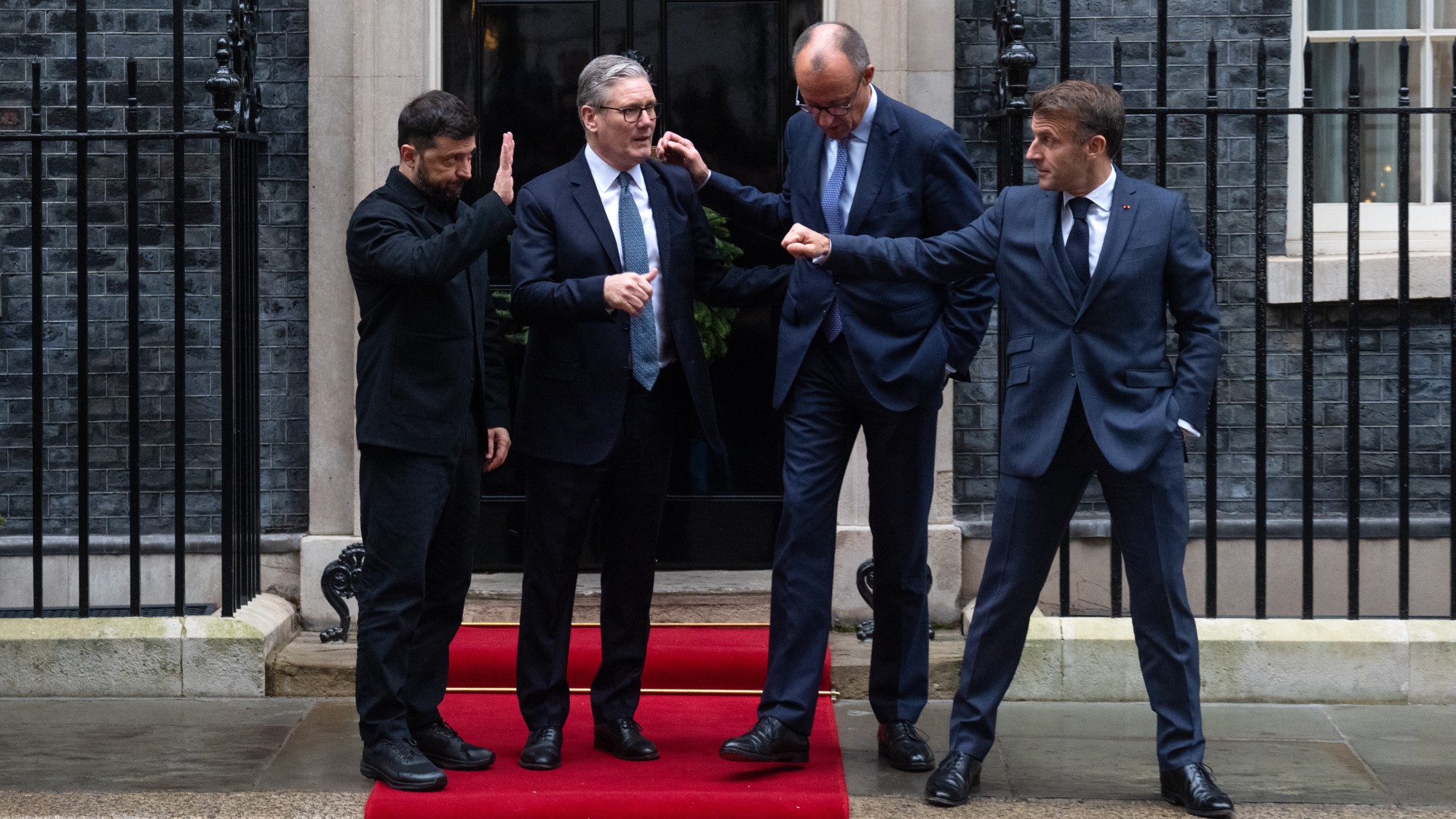Putin's Plan B for Ukraine: A DMZ between East and West


After several rounds of peace negotiations between Russia and Ukraine, Russia has begun to state explicitly (via foreign ministry spokesperson Maria Zakharova) that its war aims do not include overthrowing the elected government of Ukrainian President Volodymyr Zelensky or occupying the country.
Welcome to Vladimir Putin's Plan B.
When Russia's invasion of Ukraine began two weeks ago, overthrowing its government and installing a Russian-friendly puppet regime was very much the goal. But Putin's Plan A hasn't worked out as hoped. The Ukrainian military has fought back harder than anticipated. Zelensky has become a hero admired across the country and throughout the democratic world. And Russia's military has suffered severe setbacks. Add in economic sanctions imposed by Western governments (and boycotts by a long list of companies) that are far harsher than Putin, or really anyone, expected, and we're left with something approaching a debacle for the Russian autocrat.
The Week
Escape your echo chamber. Get the facts behind the news, plus analysis from multiple perspectives.

Sign up for The Week's Free Newsletters
From our morning news briefing to a weekly Good News Newsletter, get the best of The Week delivered directly to your inbox.
From our morning news briefing to a weekly Good News Newsletter, get the best of The Week delivered directly to your inbox.
Of course Putin can't just end his Ukrainian misadventure, slinking back across the border empty-handed. He needs to be able to point to some alteration in the pre-invasion status quo to justify Russia's enormous loss of blood and treasure, and to protect himself against a palace coup.
That's how we get to Plan B, which my colleague Grayson Quay summarized in a recent column: Ukraine would "formally cede Crimea to Russia, recognize the independence of the Russian-backed separatist republics in eastern Ukraine, and amend the Ukrainian constitution to forbid membership in international blocs like NATO and the European Union." Then there's Wednesday's clarification that Zelensky's government would get to remain in power.
This would turn Ukraine into a neutral zone between NATO and Russia. That would be a significant break from the way things worked during Cold War 1.0, when lines of separation between west and east were sharp and clear. Back then, you were either on one side of the Iron Curtain or the other — West Germany or East Germany, Paris or Prague. We can already see that stark division returning to borders today, only somewhat further east: between the Baltic states and northern Russia, between Poland and Belarus. If Putin had gotten his way in Ukraine, with a puppet regime installed in Kyiv, the dividing line would have been pushed to Ukraine's western border with Moldova and the NATO states of Poland, Slovakia, Hungary, and Romania.
But that now looks beyond Putin's grasp. Hence the fallback of turning Ukraine into an 800-mile-wide DMZ between west and east.
A free daily email with the biggest news stories of the day – and the best features from TheWeek.com
Whether Putin will demand literal or only figurative demilitarization remains to be seen, as does Zelensky's willingness to accept whatever the Kremlin ultimately demands. Even more significant is the question of whether the U.S. and NATO will accept it. (Hard lines can be easier to defend than blurred ones.)
We may receive answers sooner than any of us expected.
Damon Linker is a senior correspondent at TheWeek.com. He is also a former contributing editor at The New Republic and the author of The Theocons and The Religious Test.
-
 Why it’s important to shop around for a mortgage and what to look for
Why it’s important to shop around for a mortgage and what to look forThe Explainer You can save big by comparing different mortgage offers
-
 4 ways to save on rising health care costs
4 ways to save on rising health care costsThe Explainer Health care expenses are part of an overall increase in the cost of living for Americans
-
 How to financially prepare for divorce
How to financially prepare for divorceThe Explainer Facing ‘irreconcilable differences’ does not have to be financially devastating
-
 Trump considers giving Ukraine a security guarantee
Trump considers giving Ukraine a security guaranteeTalking Points Zelenskyy says it is a requirement for peace. Will Putin go along?
-
 Vance’s ‘next move will reveal whether the conservative movement can move past Trump’
Vance’s ‘next move will reveal whether the conservative movement can move past Trump’Instant Opinion Opinion, comment and editorials of the day
-
 Bari Weiss’ ‘60 Minutes’ scandal is about more than one report
Bari Weiss’ ‘60 Minutes’ scandal is about more than one reportIN THE SPOTLIGHT By blocking an approved segment on a controversial prison holding US deportees in El Salvador, the editor-in-chief of CBS News has become the main story
-
 Will there be peace before Christmas in Ukraine?
Will there be peace before Christmas in Ukraine?Today's Big Question Discussions over the weekend could see a unified set of proposals from EU, UK and US to present to Moscow
-
 Ukraine and Rubio rewrite Russia’s peace plan
Ukraine and Rubio rewrite Russia’s peace planFeature The only explanation for this confusing series of events is that ‘rival factions’ within the White House fought over the peace plan ‘and made a mess of it’
-
 Will California tax its billionaires?
Will California tax its billionaires?Talking Points A proposed one-time levy would shore up education and Medicaid
-
 A free speech debate is raging over sign language at the White House
A free speech debate is raging over sign language at the White HouseTalking Points The administration has been accused of excluding deaf Americans from press briefings
-
 Is Trump a lame duck president?
Is Trump a lame duck president?Talking Points Republicans are considering a post-Trump future
